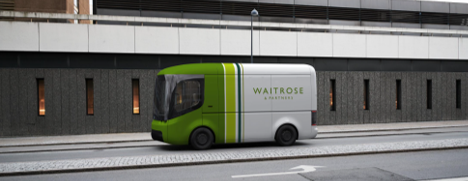2. Rationalise your fleet
Find out how to reduce your fleet size to cut costs and carbon emissions. Learn about sustainable transport and see a case study from Waitrose & Partners about their plan to replace diesel vans with EVs by 2030.
Reducing your fleet size can cut costs and carbon emissions without the need for further investment.
Fleet rationalisation means reducing your fleet size to make sure each vehicle is used as efficiently as possible. This process involves checking out your vehicles’ usage and removing any that exceed requirements. In doing this, you’ll significantly reduce your running costs as fewer vehicles will be leased, purchased and insured. You’ll also make CO2e savings as each vehicle has emissions embedded in its production.
It’s important to rationalise your fleet now. More employees are working remotely since the COVID-19 pandemic, which could have a permanent impact on miles travelled. Because of this, it’s unlikely that you’ll need all your fleet vehicles.
You should try to encourage your employees to follow the sustainable transport hierarchy which includes:
- remote working
- active travel
- public transport use
- car sharing
- car clubs
This will naturally reduce your need for fleet vehicles. Fleet rationalisation should be a continual part of managing your fleet.
Case study: Waitrose & Partners

Image source: Fleet News, 2020
Waitrose has announced it will use fossil fuel-free vehicles by 2030 for all online food deliveries. To do this, it will replace all diesel vans with electric vans. As well as producing fewer pollutants, state-of-the-art electric vehicles have greater capacity than their diesel counterparts. In some cases, this means replacing three diesel vans with two electric ones.
This is an example of how you can reduce your fleet size when replacing vehicles by using newer designs with higher power.